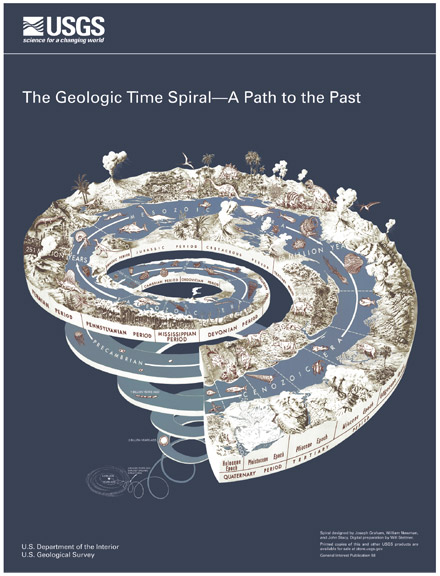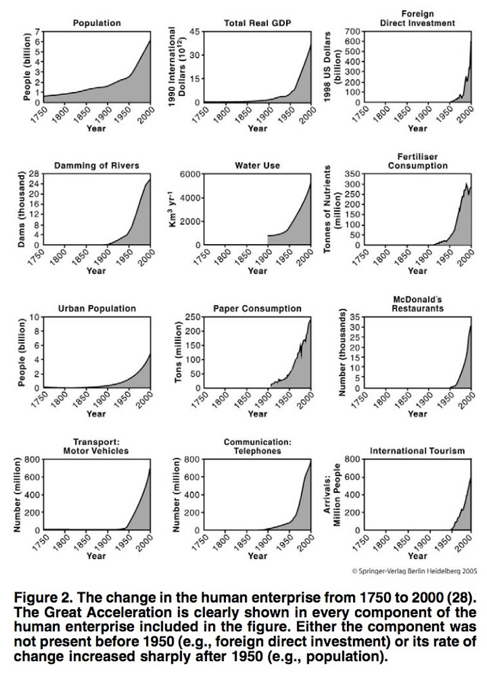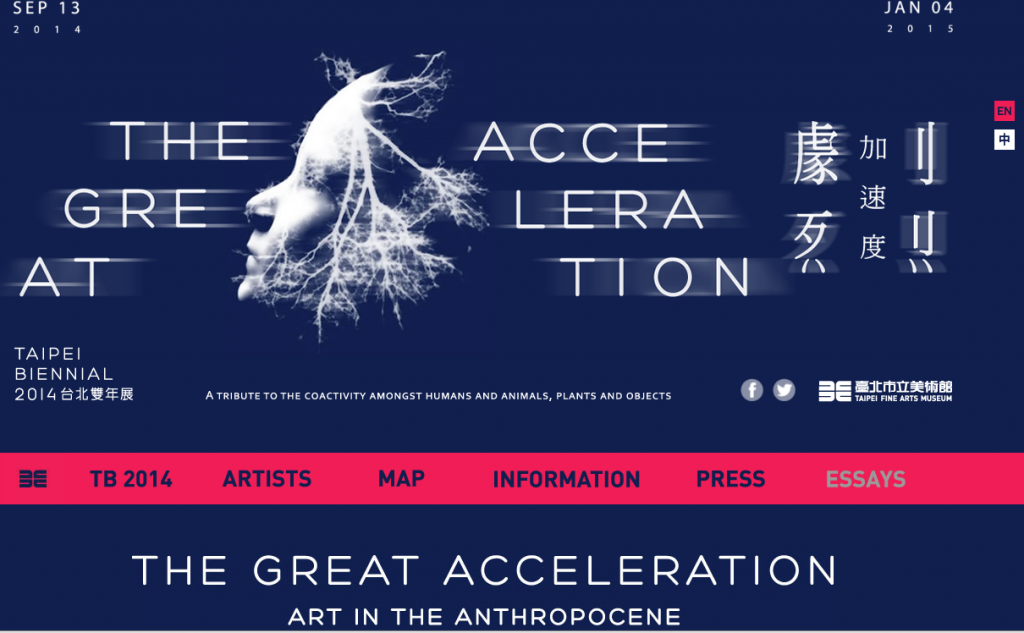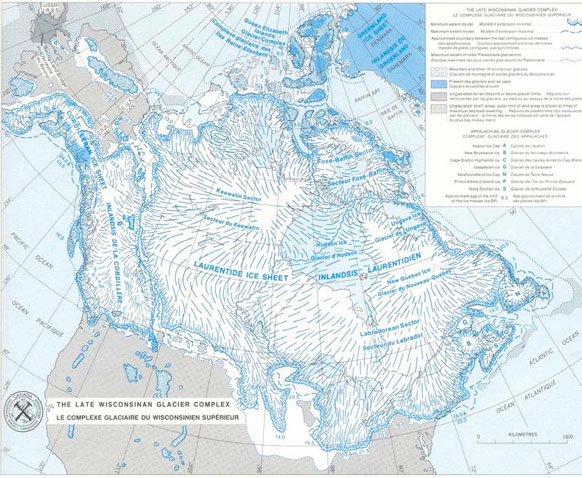The Anthropocene has been proposed as a new geologic epoch, named for human impact upon the planet and its ecosystems (this includes impact upon humans themselves). Anthropo is Greek for HUMAN.
What kind of impact might this mean? What actions, events and materials compose the Anthropocene?
Make a list of 10-15 events and materials that you hear in this video that have contributed to the Anthropocene.
READ: Elizabeth Kolbert, Enter the Anthropocene: The Age of Man, National Geographic
Climate Change is a geologic event of the Anthropocene. Some people call this the “Great Acceleration” illustrated by the keeling curve.
The Keeling Curve is a graph that plots the ongoing change in concentration of carbon dioxide in Earth’s atmosphere since 1958. It is based on continuous measurements taken at the Mauna Loa Observatory in Hawaii that began under the supervision of Charles David Keeling.
There are scientific debates about whether the Anthropocene should be declared an official, geologic epoch. Also, if we are living within the Anthropocene now, when did it begin?
When do you think the Anthropocene began? See the New York Times, Dotearth blog: “Researchers Propose Earth’s ‘Anthropocene’ Age of Humans Began With Fallout and Plastics” for background to this discussion.
____
Geologic thinking requires a great deal of imagination and creativity. When thinking about geologic time we have to imagine times we can’t inhabit (in the past and future) yet we know affects the present. Perhaps this is why artists and people working in the humanities are very interested in the idea of the Anthropocene. In many ways, it’s artist/designers and people working in the humanities that have taken up this term and organized books, exhibitions, projects, conferences and events about the topic. Creativity/aesthetics are about visualizing things that we can’t always see or sense. Communicating the invisible.
How might artists and designers share (visually or otherwise) stories about planetary changes that unfold at geologic scales that humans can’t individually experience (thousands of years) — in ways that are different than how scientists share information?
See: HKW’s Anthropocene Project (Berlin): “Our notion of nature is now out of date. Humanity forms nature. This is the core premise of the Anthropocene thesis, announcing a paradigm shift in the natural sciences as well as providing new models for culture, politics, and everyday life. In a two-year project, HKW explores the hypothesis’ manifold implications for the sciences and arts.”
See: Geologic Imagination: Sonic Acts Festival 2015 (Amsterdam): “Inspired by geosciences, the 2015 Sonic Acts Festival zooms in on planet Earth. Fundamental to The Geologic Imagination is the thesis that we live in a new geological epoch, the Anthropocene. Human activity has irreversibly changed the composition of the atmosphere, the oceans, and even the Earth’s crust. Humanity has become a geological force.”
See: Taipei Biennial, 2014 The Great Acceleration: Art in the Anthropocene: “Human activity has been transforming the planet for millennia. All the ecosystems now bear the mark of human presence, but the scale and speed of change in the last 60 years, called by scientists The Great Acceleration, also led them to name anthropocene this new geological epoch — an era marked by the strong impact of human activities upon the atmospherical and geological evolution of planet earth. Taipei Biennial 2014 uses this image in order to examine how contemporary art adresses this new contract between human beings, animals, vegetals, machines, products and objects. How does today’s art define and represent our space-time ? The exhibition will highlight the way artists focus on links, chainings, connections and mutations : how they envision planet earth as a huge network, where new states of matter and new forms of relations appear…”
How might we meaningfully sense and experience geologic changes currently underway, right here in New York City? We can look at the present, through both the past and the future.
The Pleistocene is when humans first evolved into designers — as a result of their need to respond to planetary changes, including climate change (though climate change was not human-induced a million years ago).
“Imagine yourself in Central Park one million years ago. You would be standing on a vast ice sheet, a 4,000-mile glacial wall, as much as 2,000 feet thick. Alone on the glacier, you would not sense its slow crushing, scraping, ripping movement as it advanced south, leaving great masses of rock debris in its wake. Under the frozen depths, where the carousel now stands, you would not notice the effect on the bedrock as the glacier dragged itself along.” – Robert Smithson (artist, creator of the Spiral Jetty)
Download project brief, Is this the Anthropocene? (PDF)




